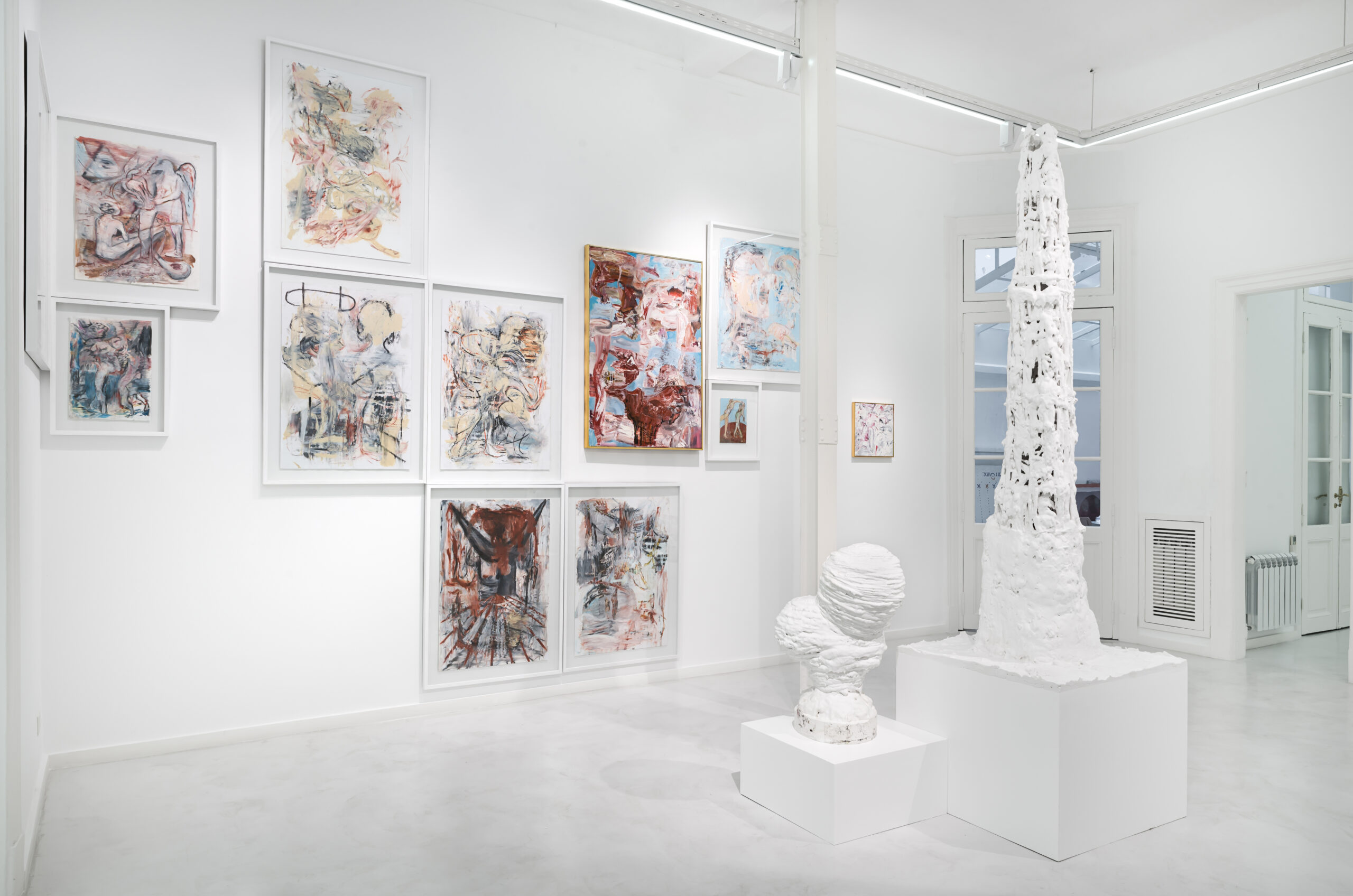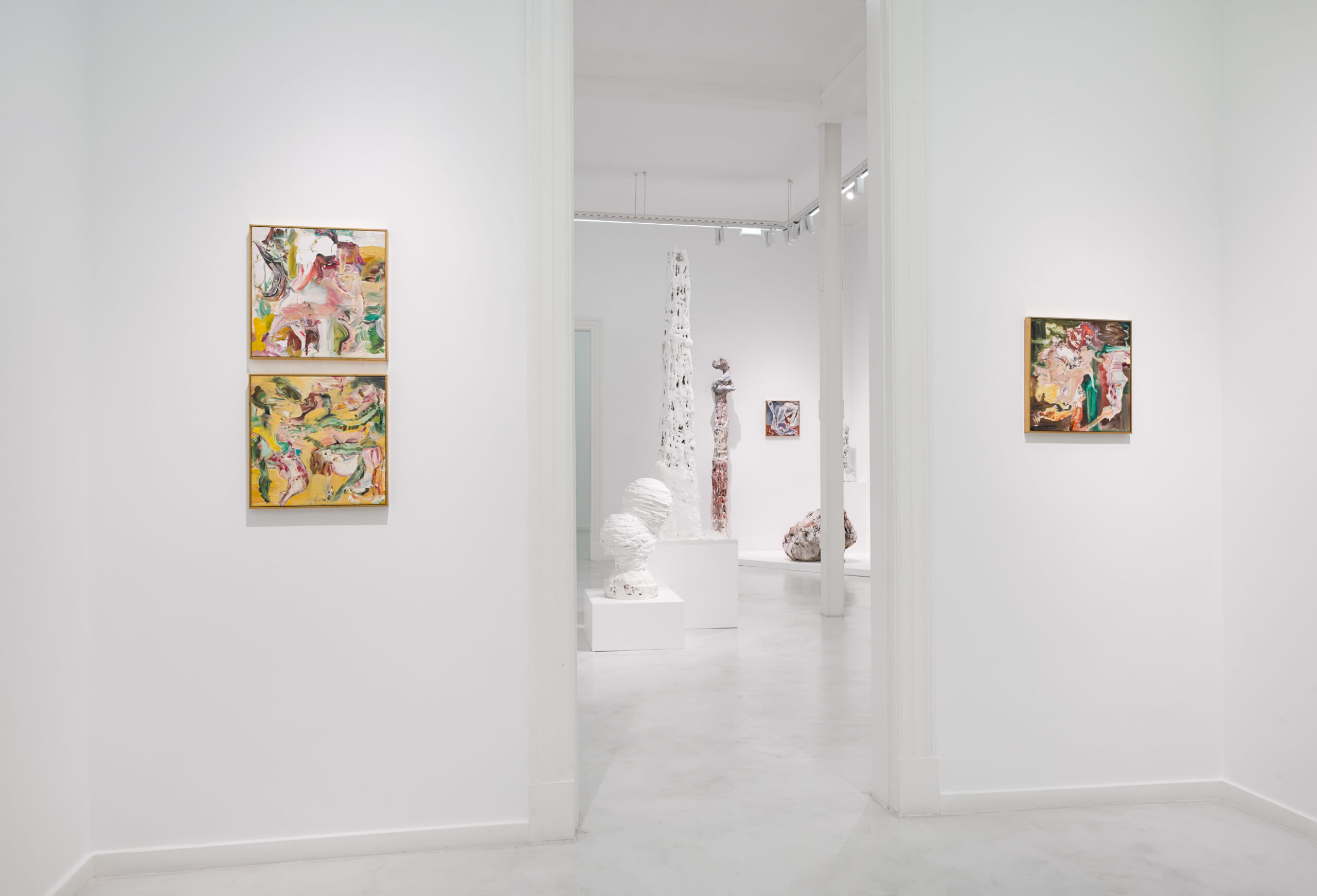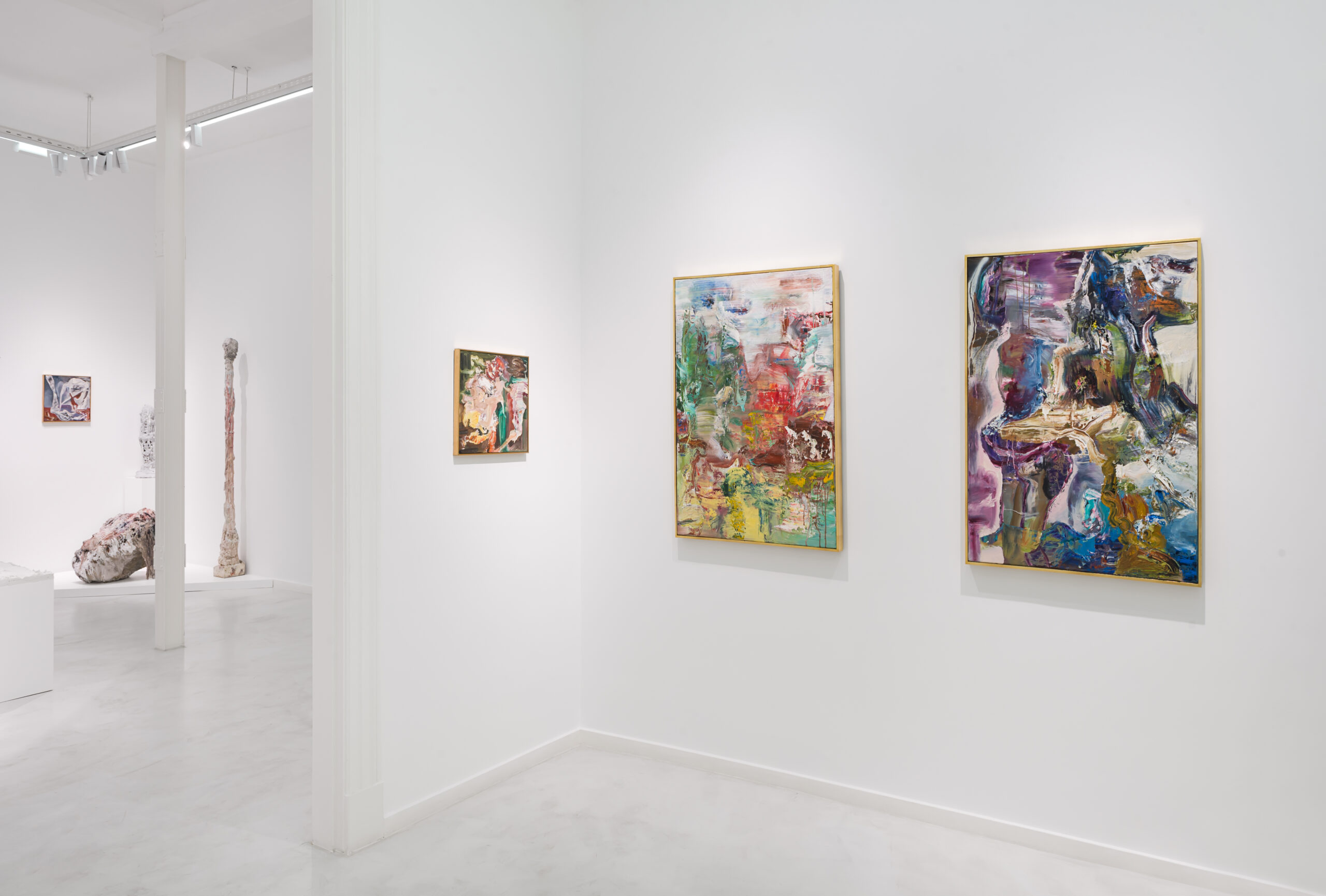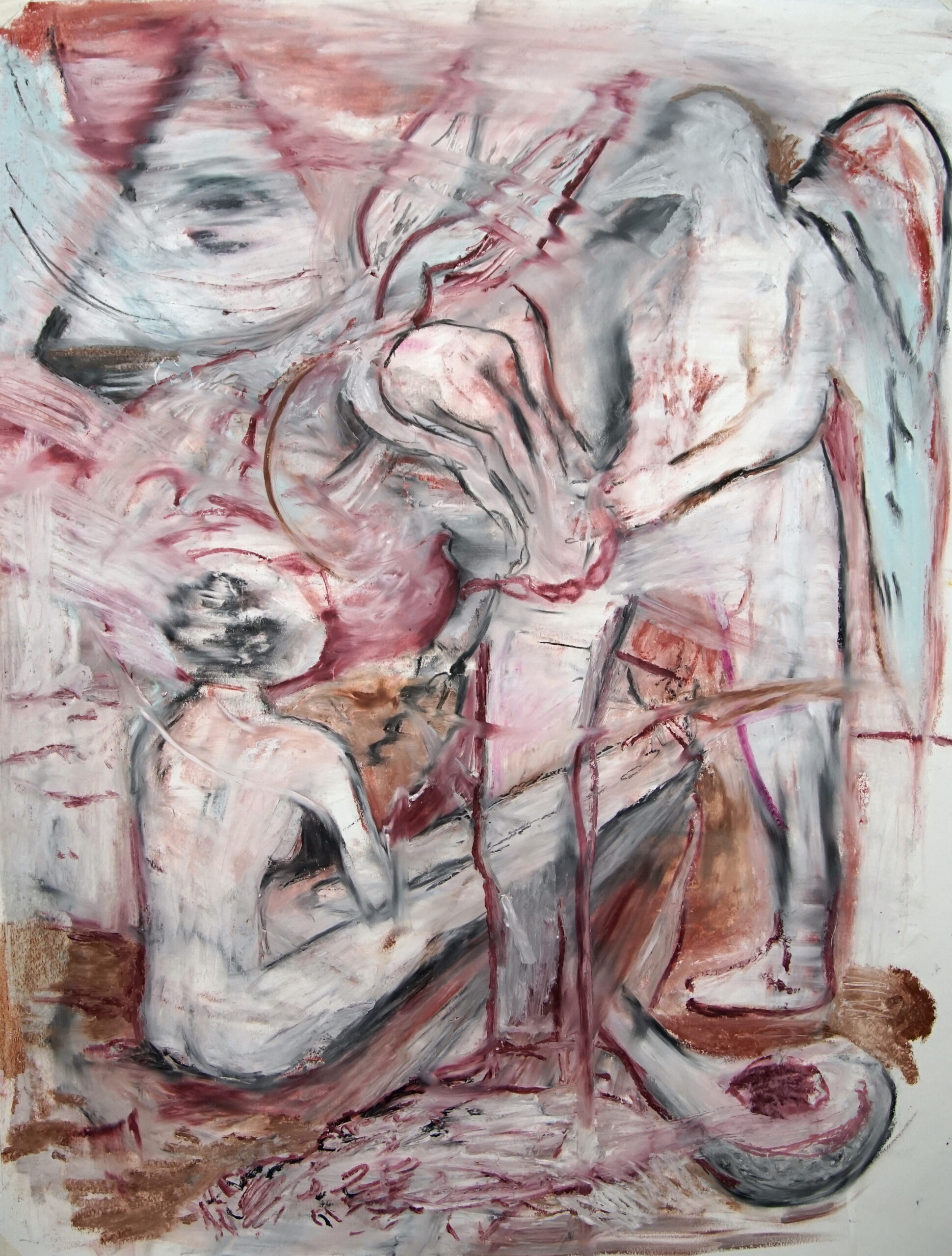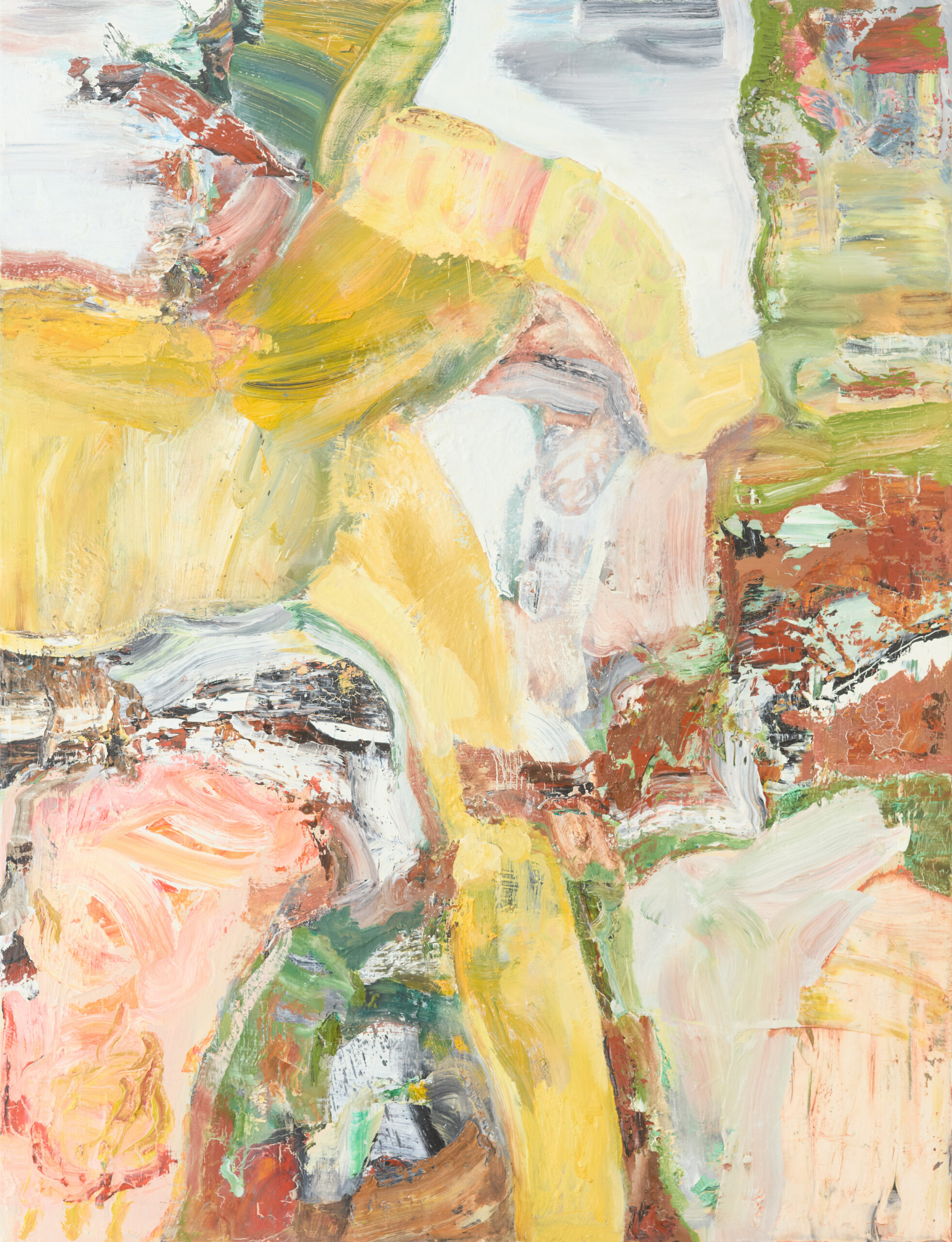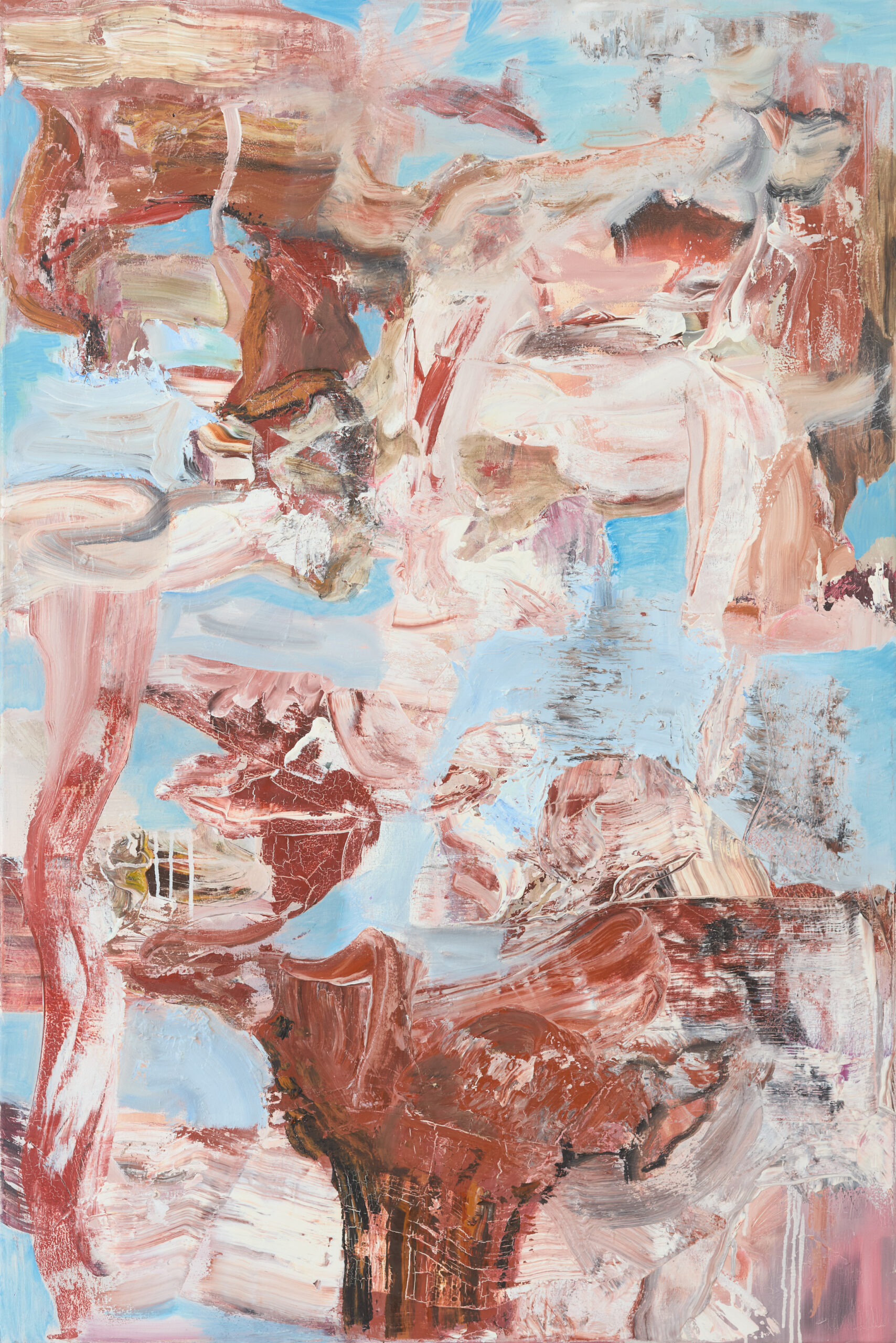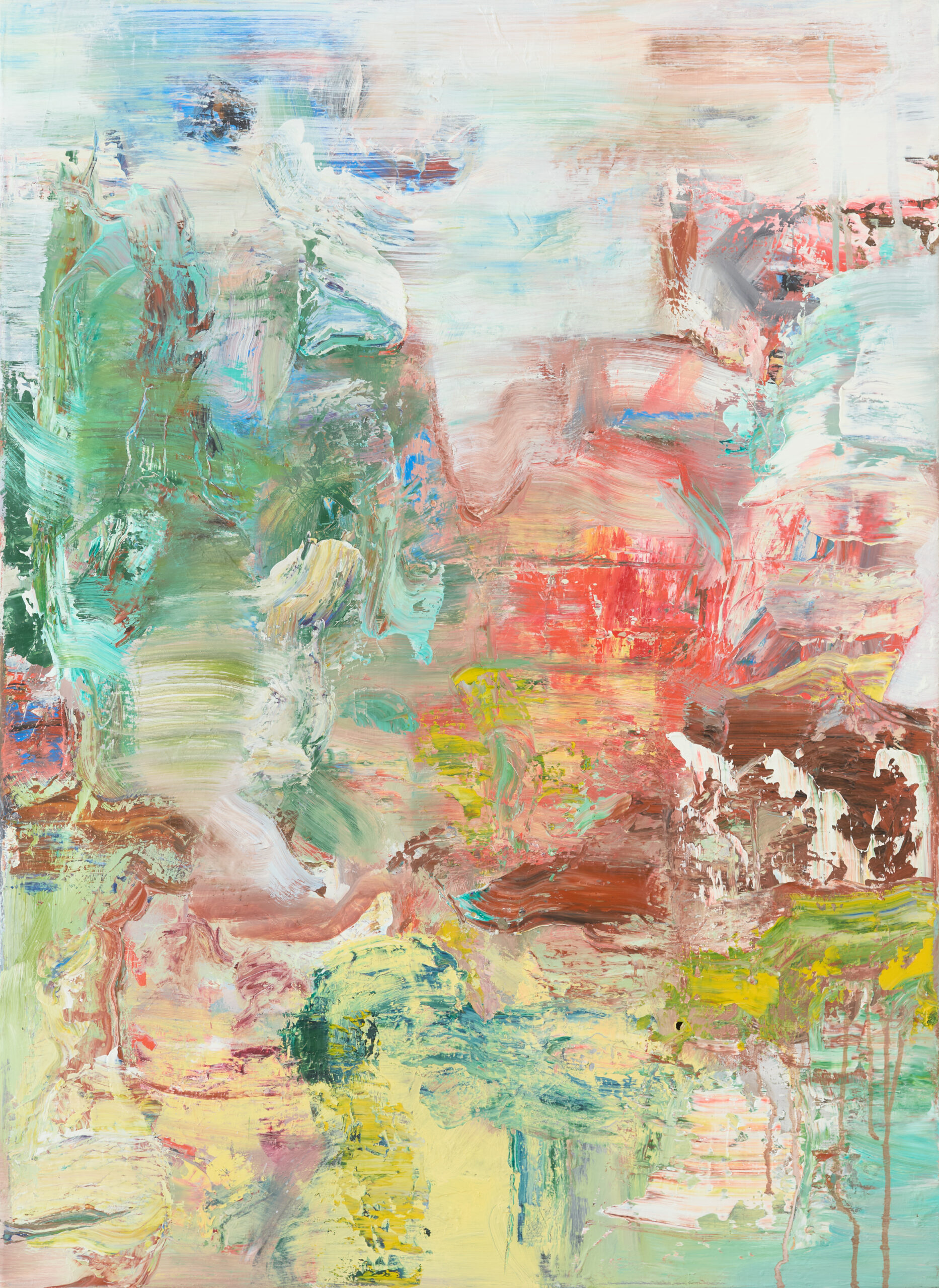Fuzz | Juan Becú
Curated by Joaquín Rodríguez
Distort, destroy, and start over.
For this exhibition, Juan Becú (Buenos Aires, 1980) looks back at the landscape he has built over 25 years of work, reconnecting with his traces, remains, milestones, and disappointments in order to analyze the processes he has gone through in the search for his poetics. Although he has explored alternative paths such as sculpture, drawing, video, and performance, painting has always been the guiding force, imposing its own logic. Time and again, it has been killed and resurrected in this century, but Becú has remained loyal, even when the attention of the art world shifted to other contemporary languages. However, the relationship is not ideal; it could be described as a sort of Stockholm Syndrome. Each day they spend together in the studio leaves him completely exhausted and anxious for the reunion the next day. The bond is tortuous and filled with constant confrontations; it is only possible through debate: when one proposes an idea, the other automatically contradicts it; when it seems like an agreement is within reach, one of them throws everything overboard and they start over. Detachment from images proves to be the most exhausting challenge. The impossibility of citing or maintaining a motif as a narrative axis gives way to emotion, sensitivity, and spirituality to take the lead in decision-making. Thus, the images evolve amidst these disputes; if a figure longs to appear, the material demands a gesture that covers it partially or completely. If the oil paint seeks to wander anarchically, it will be forced to suggest silhouettes that will later blend with other brushstrokes on the canvas. Color becomes a hostage, predominant in its presence but always adrift, influenced by gestures and moods. A color that dominates the composition one day may disappear the next, drowned by the emergence of new tensions.
In his series of drawings “Genomanías,” he tries to offer a break for thought, aiming for an informal and carefree automatism. He seeks to suppress conscious control by working quickly, freeing his hand on the paper and restricting the color palette. However, painting will intervene, demanding that layers of oil pastels be added to veil and conceal. In an act of resistance, Becú will partially remove them to reveal fragments of the initial proposals.
In sculpture, he will attempt, unsuccessfully, to escape the intensity of that relationship. But painting will remain present, guiding his hand with techniques that are intrinsic to its history. Forms begin to emerge through the accumulation of plaster on wooden and iron structures. It is a process similar to how sandcastles are built by dripping: pouring the wet mixture with the hand, letting it slip through the fingers, sedimenting, and creating cavities and interior spaces. A volumetric dripping with the haphazard vigor of Abstract Expressionism and the introspective, melancholic subjectivity of Informalism.
It is in music where Juan finds a space that has not allowed painting to infiltrate. It is a social space, linking him to other musicians and audiences. Yet, it will be the discipline that provides him with one of the keys to understanding his practice in the visual arts. His brushstrokes, like guitar chords distorted by fuzz, break the conventional harmony, opening the way to a more experimental and emotional dimension. If fuzz distorts pure sound, Becú, through the layering of colors, forms, and gestures, generates tensions between order and chaos, between representation and abstraction. In both cases, the result is an intense sensory experience that stimulates new perceptions in both the listener and the viewer.
Joaquín Rodríguez
